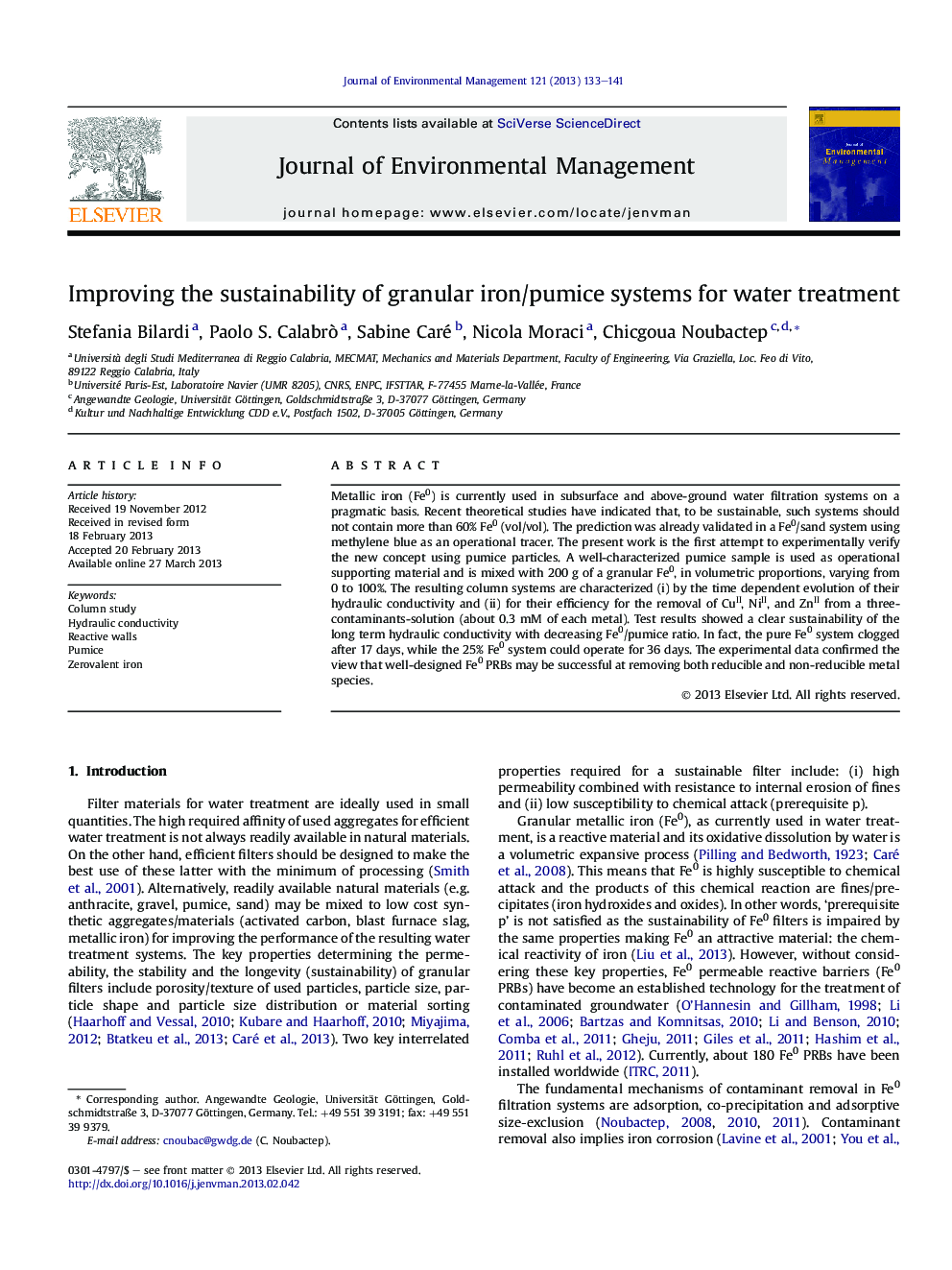| کد مقاله | کد نشریه | سال انتشار | مقاله انگلیسی | نسخه تمام متن |
|---|---|---|---|---|
| 1056363 | 1485291 | 2013 | 9 صفحه PDF | دانلود رایگان |

Metallic iron (Fe0) is currently used in subsurface and above-ground water filtration systems on a pragmatic basis. Recent theoretical studies have indicated that, to be sustainable, such systems should not contain more than 60% Fe0 (vol/vol). The prediction was already validated in a Fe0/sand system using methylene blue as an operational tracer. The present work is the first attempt to experimentally verify the new concept using pumice particles. A well-characterized pumice sample is used as operational supporting material and is mixed with 200 g of a granular Fe0, in volumetric proportions, varying from 0 to 100%. The resulting column systems are characterized (i) by the time dependent evolution of their hydraulic conductivity and (ii) for their efficiency for the removal of CuII, NiII, and ZnII from a three-contaminants-solution (about 0.3 mM of each metal). Test results showed a clear sustainability of the long term hydraulic conductivity with decreasing Fe0/pumice ratio. In fact, the pure Fe0 system clogged after 17 days, while the 25% Fe0 system could operate for 36 days. The experimental data confirmed the view that well-designed Fe0 PRBs may be successful at removing both reducible and non-reducible metal species.
► Fe0/additives mixtures are widely used for aqueous contaminant removal.
► Reliable methods for designing Fe0 filtration systems are still lacking.
► Additives have been mostly used to account for construction width requirements.
► Various Fe0/pumice ratios were tested for aqueous metal removal in dynamic systems.
► Results revealed the 25% Fe0 system as the most efficient and sustainable.
Journal: Journal of Environmental Management - Volume 121, 30 May 2013, Pages 133–141